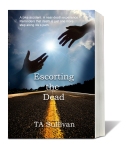My friend wanted me to attend a writing seminar with her, so I agreed to go. However, the summary said it was geared more for novices, so I didn’t really expect to learn much. Boy, was I surprised.
The speaker, a creative writing instructor from one of the top schools in the south, came in and took her place at the podium. After introducing herself and giving us a brief synopsis of what the presentation was to be about, she asked us to take five minutes to describe her as if she was a character in one of our stories.
The results were pretty much as expected. Most of the attendees gave similar descriptions to this:
Melanie is a 30-ish woman with brown, shoulder-length hair, dressed in a gray suit with a lacy, rose-colored blouse.
She told us to hang on to those descriptions, and then she went on to give us her presentation. That’s when we all learned how wrong we had been in actually thinking we had described a character. What we had described was a one-dimensional, uninspired, and uninteresting person.
A story character should be as varied as someone in real life. They should have substance, not just a description. They should come alive for the reader and become someone that the reader can actually believe in. The 5 primary attributes that each character needs in order to achieve this kind of depth are:
Mannerisms/Traits: These are the tics or compulsions that a character displays consistently. For example, the character paces when nervous or agitated, chews gum or tobacco, hums to him- or herself, blinks excessively, clicks a pen without realizing it, taps the end of a pencil on the desk all the time, bounces his or her foot, plays with his or her hair or runs his or her fingers through his or her hair, chews his or her fingernails, rubs at a scar on his or her chin, cheek, nose, etc., stutters, or laughs inappropriately.
Behaviors/attitudes: These are how the character displays his or her feelings. For instance, the character might be belligerent, argumentative, disagreeable, a yes-man, Polly Anna-like, naïve, happy, bland, or teasing.
Scents (what smells are associated with the character, if any): Most memories are related (and often triggered) by scent. Yet, as authors we tend to forget about the smell-factor. Perhaps, because books (even electronic ones) don’t yet include the ability to smell our characters or their surroundings. Still, even a description of an odor or an aroma can evoke a sense memory and help our readers remember and relate to our characters. So, include references to scents whenever possible. As it is, most people have a particular scent, and those that wear perfumes or aftershaves, or use perfumed dryer sheets, usually have a cloud of odors surrounding them. Or perhaps, your character forgot to bathe, was climbing about in a dumpster, or lives with a herd of cats.
Sounds (what sounds are associated with this character): Sounds are another overlooked, yet memorable way to help your readers remember and relate to your characters. Perhaps your character whistles, imitates bird calls, makes clicking sounds (of fingernails on a desktop or keyboard, of tongue against the roof of the mouth) or tapping sounds (of shoes or cane or fingers while texting), drags his or her foot, is associated with a rustling (of petticoats, silk fabric against skin), snapping (of cape or of gum), clomping (of boots or shoes), or wheezing (due to asthma or being overweight).
Looks: Physical attributes are the easiest to describe and usually what we (as authors) tend to focus on. However, since most readers are inclined to let their own imaginations flesh out the character, this is where the author needs to be more sparing. Include only a few basics and let the reader do the rest. For instance, relate your character’s hair color, hair style, eye shape and color, colors worn (bright colors, dull colors), clothes styles, height, weight, or unusual physical features (scars, nose size, ear shape, piercings, missing limbs, or tattoos), but describing the shoe size, exact height, and a detailed discussion of the character’s wardrobe is rarely useful and is, most times, distracting.
With all this new information at hand, she again asked us to describe her as if describing a character in one of our stories, and the results were profoundly different. For example:
Melanie, our instructor for the day, was a professional-looking woman, who paced the stage in her enthusiasm. Our eyes followed her tapping heels, while her down-home voice engaged our ears. She was a southern lady, from her warm smile to the hint of jasmine that surrounded her.
Now, which description makes you feel as if Melanie was, or could be, a living person? Which description helps you connect on all levels with this person?
So, the next time you need to describe a character for your story, remember there is more to people than just how they look. Ask yourself: what does the character sound like, smell like, and act like. Add each layer to that character until you have someone so real you can see them standing in the room with you. That’s a character that your readers will remember. That’s the type of character you need to help you tell your stories.


















Very interesting. I want to spend time with this.
LikeLike